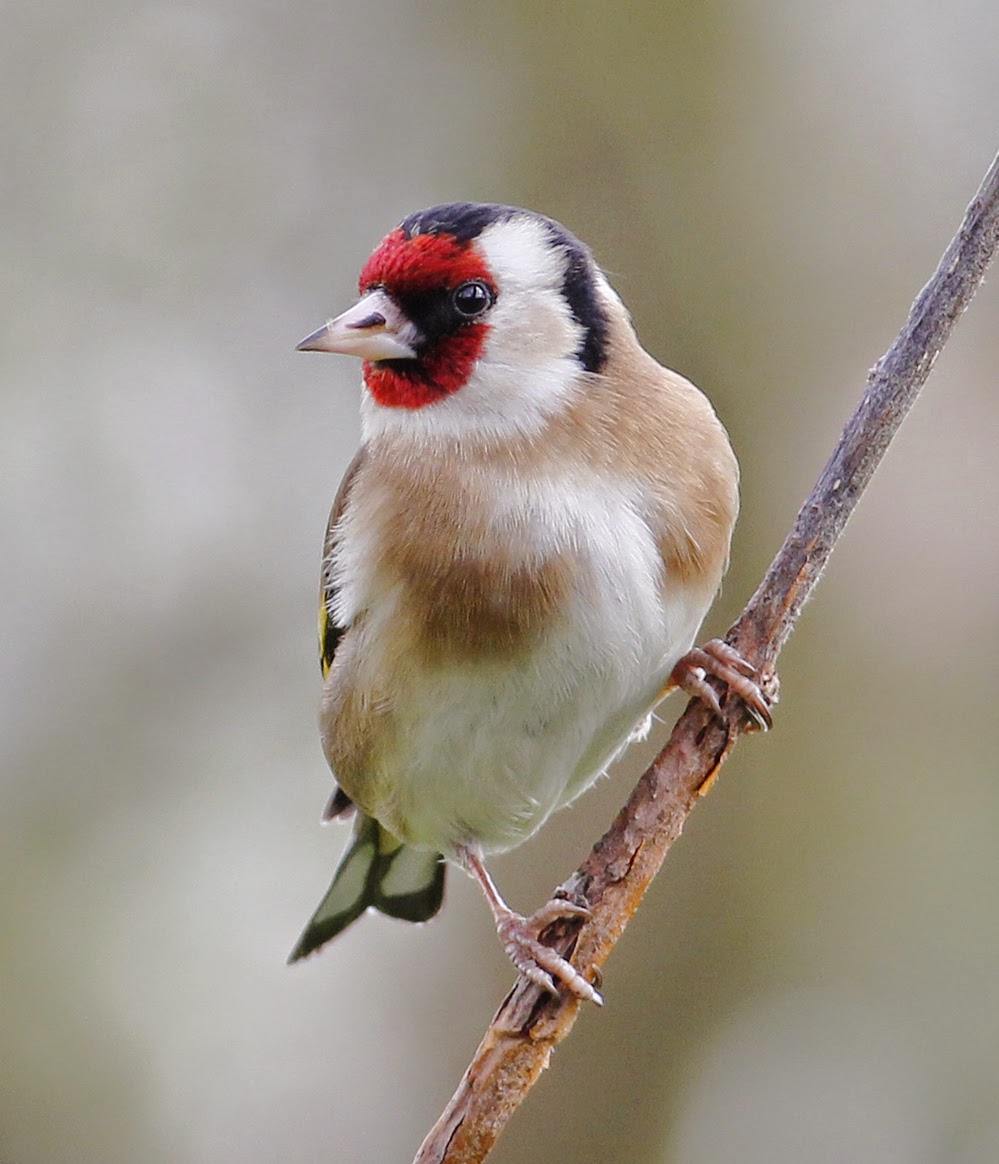The Spring Equinox arrived on 20th March bringing with it days and nights of almost exactly the same length. For ringers it entails timely starts if they are to catch the birds which find the early worms. After a 0500 alarm followed by a hurried breakfast I scraped a thin layer of frost from the windscreen before setting off for Oakenclough. I was meeting up with Andy and Brian for a ringing session in the plantation.
From recent Internet postings it seems that a number of birders at coastal sites have seen and heard migrating Lesser Redpolls during the past seven days, sightings which correspond to the 16 caught here at Oakenclough since 15th March.
This morning proved very quiet and only 13 birds caught. But once again Lesser Redpolls were the most abundant species: 6 Lesser Redpoll, 3 Blue Tit plus one each of Reed Bunting, Chaffinch, Goldfinch and Dunnock.
Lesser Redpoll - adult male
The above is one of this morning’s adult male Lesser Redpolls showing crimson-reddish streaking on the breast, a feature which females lack. Most males have such colouration but in some individuals it can be indistinct, especially in early Spring.
Lesser Redpoll - second year female
Lesser Redpolls can be more difficult to age than other finches. British birds rarely show a moult limit in the greater coverts, and tail shape is often the key to ageing as shown in "Svensson" the ringer's aide memoir.
Ageing Lesser Redpolls - Svensson
The wings are also useful for determining the age. After the breeding season and in their second year of life Lesser Redpolls fully moult their wings and tail, and these relatively new flight feathers are still identifiable in March and into the beginning of the breeding season. In Spring second-year birds still have the flight feathers with which they left the nest almost a year ago, and these feathers are usually more obviously worn.
Until January 2001 UK redpolls were assigned to the cabaret race of the Redpoll Carduelis flammea cabaret. At that time the British Ornithologists' Union decided that it should be 'split' from Mealy Redpoll Carduelis flammea flammea, thus making Lesser Redpoll Carduelis cabaret a separate species from Common Redpoll Carduelis flammea.
There are three different species of redpoll seen in the UK – Lesser Redpoll, Common Redpoll and Arctic Redpoll. Lesser Redpolls are by far the most frequently seen. Despite their name, Common Redpolls are much scarcer in the UK, with numbers arriving in autumn and winter varying considerably between years.
Most Common Redpolls are encountered in the north and east of the UK although I remember on one November day at Pilling in 1990, together with PJB and BB, catching 4 such examples together. As this was before the “split”, ringers then simply referred to such large, distinct individuals as “northern Redpolls”, and they were entered into the ringing database as simply ”Redpoll” - REDPO. Nowadays each species has a separate code for data input - LESRE, COMRE and ARCRE.
Naturally enough the rare Arctic Redpoll is much sought after by UK bird listers with even the Common Redpoll the subject of many an anxious pursuit. Meanwhile the Lesser Redpoll lives up to its name by becoming of lesser interest.
Our birding this morning: 1 Goldcrest, one pair of Bullfinch, one pair of Pied Wagtails, 3 pairs of Mistle Thrush, 4 Cormorants, 2 Buzzards, 2 Grey Heron, 1 Kestrel and 1 Jay.
Buzzard
Mistle Thrush
Please log in to Another Bird Blog very soon for more polls but definitely no politics.
In the meantime this post links to World Bird Wednesday.
In the meantime this post links to World Bird Wednesday.















































































